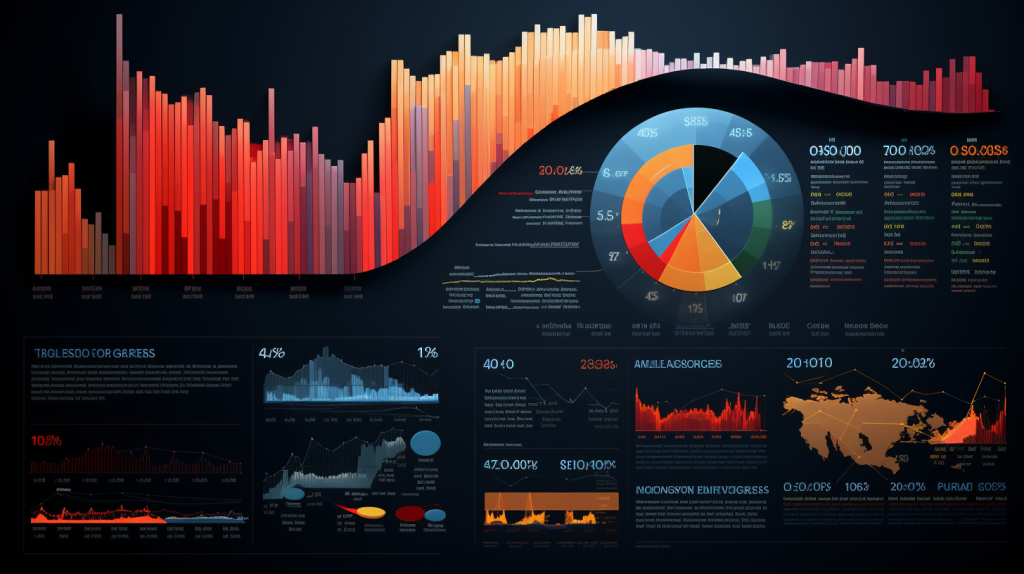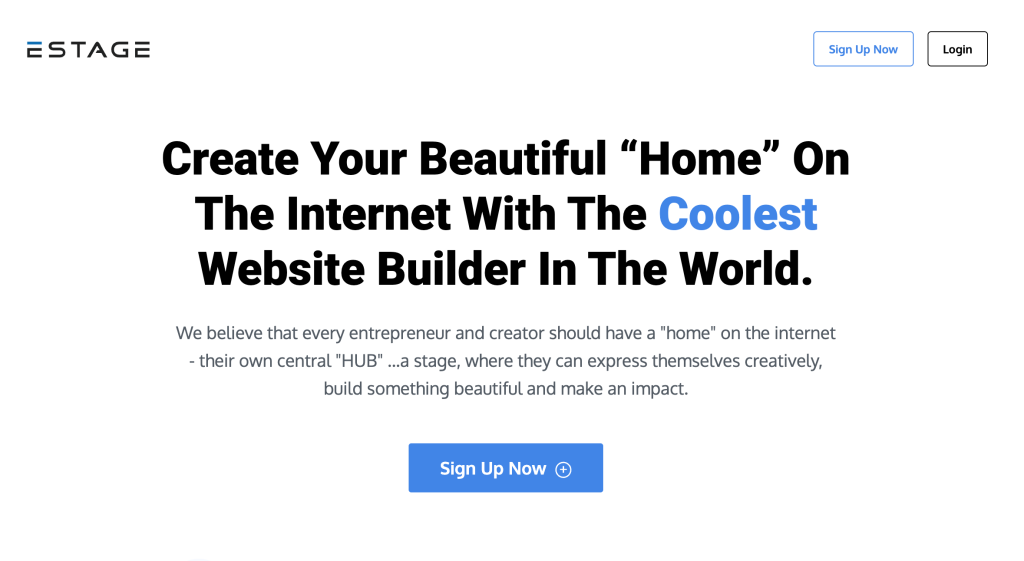Beginners Guide To Digital Marketing | Digital Product Creation Made Easy
Table of Contents
In today’s digital age, the realm of digital product creation has expanded beyond physical goods. The rise of digital products has opened up exciting possibilities for entrepreneurs, artists, and professionals to share their expertise, creativity, and knowledge with a global audience.
From e-books and online courses to mobile apps and graphic design, digital product creation offers a lucrative avenue for generating income and making a meaningful impact. In this blog, we will delve into the art of digital product creation and explore the diverse opportunities it presents. Let’s embark on this journey and discover the potential that lies within.
I. Understanding Digital Product Creation:
Digital product creation is the process of conceptualizing, designing, and developing digital offerings that provide value to customers. It involves leveraging technology to create innovative and engaging products that cater to the needs and desires of the target audience.

Understanding the fundamental aspects of digital product creation is essential for success in this dynamic field.
II. Exploring Digital Product Categories
Digital products span various categories, each offering unique opportunities and challenges. Let’s explore some popular categories and their characteristics:
E-books:
E-books are digital publications that provide readers with in-depth information, knowledge, or entertainment on various topics.
They are accessible from devices such as smartphones, tablets, and e-readers, allowing readers to carry a vast library in their pockets. E-books cover a wide range of genres, including fiction, non-fiction, self-help, business, and more.
One of the significant advantages of e-books is their flexibility. Readers can adjust font sizes, switch between day and night mode, and customize their reading experience according to their preferences.
Additionally, e-books often come with useful features like bookmarking and search, enabling readers to easily navigate and find specific sections or passages within the text. With the increasing popularity of e-books, readers can now enjoy a vast collection of literature conveniently and carry their favorite books wherever they go.
Mobile apps:
Mobile apps have become an integral part of our daily lives, offering diverse functionalities and services to enhance our experiences with smartphones and tablets. These software applications are designed to cater to a wide range of needs and interests.
Productivity apps help users manage tasks, organize schedules, and collaborate with others effectively. Entertainment apps provide access to games, movies, music, and other forms of digital entertainment. Social media apps connect people from all over the world, allowing them to share updates, connect with friends, and discover new content.
Educational apps offer interactive learning experiences, enabling users to acquire new knowledge and skills. The versatility of mobile apps makes them valuable tools in various aspects of our lives, from work to leisure.
With millions of apps available across different platforms, users can find apps that align with their interests and make their smartphones or tablets more powerful and versatile devices.
Graphic design:
Graphic design is a form of visual communication that combines creative and artistic elements to convey messages and ideas. It encompasses various mediums, including print and digital media.
Graphic designers utilize typography, imagery, color schemes, and layout techniques to create visually appealing designs for a wide range of purposes. Here are some tools that can 10X your designing speed!
They play a crucial role in branding and marketing, where they develop logos, packaging designs, and promotional materials that capture the essence of a company or product.
Graphic design is also instrumental in web design, where designers create intuitive and aesthetically pleasing interfaces for websites and digital platforms. In the realm of advertising, graphic design is used to create eye-catching visuals that communicate messages effectively.
From posters and brochures to websites and mobile apps, graphic design shapes our visual experiences and enhances the way we interact with information and brands.
Video production:
Video production involves the process of planning, recording, and editing videos for various purposes. It is a creative and technical field that requires a combination of artistic vision and technical expertise.
Professional filmmakers employ video production techniques to bring stories to life on the big screen, creating immersive and engaging cinematic experiences. In recent years, the rise of social media and online video platforms has made video production accessible to a broader audience.
Individuals and businesses now have the means to produce and share videos on platforms like YouTube, Instagram, and TikTok, allowing them to connect with viewers and build a following.
The process of video production includes scripting, where the narrative or concept is developed, filming, where the scenes are captured, and post-production, where the footage is edited, enhanced, and finalized.
Whether it’s a short film, a promotional video, or social media content, video production offers a powerful medium for storytelling and visual communication.
Podcasting:

Podcasting has gained immense popularity as a form of on-demand audio content. It provides a platform for individuals and organizations to share information, stories, interviews, and discussions with their audience.
Podcasts offer a convenient and accessible way to consume content, as they can be listened to anytime, anywhere, using smartphones, tablets, or computers. The diverse range of topics covered in podcasts caters to various interests and niches, from news and politics to true crime, comedy, and self-improvement.
With podcasting, creators can engage with their audience on a personal level, fostering a sense of connection and community. Listeners can subscribe to their favorite podcasts and receive new episodes automatically, ensuring they never miss out on the latest content.
Whether for entertainment, education, or simply passing the time, podcasts have become a popular medium for storytelling and sharing ideas in an audio format.
Webinars:
Webinars are online seminars or presentations that are delivered in real-time or recorded format. They provide individuals and organizations with a convenient way to host educational or interactive events remotely, bringing together participants from different locations. Webinars offer a range of benefits, both for presenters and attendees.
For presenters, webinars allow them to share their knowledge, expertise, or products with a wide audience, regardless of geographical constraints. They can deliver presentations, conduct training sessions, or host panel discussions, engaging with participants through live chat or Q&A sessions.
Attendees, on the other hand, can access valuable content and learn from industry experts without the need to travel or attend physical events. They can join webinars from the comfort of their homes or offices, interacting with presenters and other participants in real-time.
Webinars have become an essential tool for businesses, educational institutions, and thought leaders to connect with their target audience, share insights, and provide interactive learning experiences.
Templates:
Templates are pre-designed layouts or formats that serve as a foundation for various projects. They provide a starting point and a structure that users can customize and adapt to their specific needs. Templates are widely used in various fields, including document creation, presentations, website design, and graphic design.
They offer a time-saving solution, eliminating the need to create designs from scratch. Templates ensure consistency and professional aesthetics, as they are often designed by experts or follow established design principles.
For example, in document creation, templates provide a standardized format for resumes, reports, or business proposals, enabling users to focus on content rather than layout.
In website design, templates offer ready-made structures and designs that can be easily customized, allowing individuals and businesses to create functional and visually appealing websites without extensive coding or design knowledge.
Templates are valuable resources that streamline the creative process and help users achieve professional results efficiently.
Infographics:

Infographics are visual representations of data, information, or processes. They combine illustrations, charts, graphs, icons, and textual elements to simplify complex concepts and make information more engaging, memorable, and easily understandable.
Infographics are effective tools for presenting information in a concise and visually appealing manner. They are widely used in various contexts, such as education, journalism, marketing, and data analysis. In education, infographics can break down complex topics and present them in a visually appealing format, facilitating learning and comprehension.
In journalism, infographics help convey news stories or statistics in a way that is easily digestible for readers. In marketing, infographics are used to showcase product features, present survey results, or explain complex processes. With the increasing amount of information available, infographics provide a means to communicate information efficiently and capture the attention of the audience.
Digital art:
Digital art is a form of artistic creation produced using digital tools and techniques. It encompasses various mediums, including digital painting, illustration, 3D modeling, and mixed media.
Digital artists utilize software applications and hardware devices such as drawing tablets and styluses to create their artwork. The digital medium offers artists a range of possibilities and advantages.
It allows for greater flexibility and experimentation, as digital artwork can be easily edited, manipulated, and transformed without the limitations of traditional art materials. Digital art also enables artists to explore new techniques and styles, pushing the boundaries of creativity.
It has found applications in various industries, including entertainment, advertising, and design. Digital art has revolutionized the way art is created and consumed, providing artists with new avenues for expression and reaching a wider audience through online platforms and galleries.
Animation:
Animation is the technique of creating moving images or visual effects through a sequence of static images. It brings characters, objects, or designs to life through the illusion of motion.
Animation is widely used in various mediums, including films, advertisements, video games, and explainer videos. In filmmaking, animation opens up possibilities for storytelling that go beyond the limitations of live-action films.
Animated films can transport viewers to imaginative worlds, convey complex ideas, or create captivating narratives. In advertising, animation allows for creative and visually appealing advertisements that capture the attention of the audience. In video games, animation brings characters and environments to life, enhancing the immersive experience for players.
Explainer videos utilize animation to simplify complex topics or processes, making them easier to understand and engaging for viewers. Animation combines artistic skills, storytelling abilities, and technical expertise to create visual experiences that entertain, inform, and inspire audiences.
Content creation:
Content creation is the process of developing and producing engaging and valuable content across different mediums. It involves researching, planning, writing, designing, or recording content that educates, entertains, or informs audiences. Content creators are individuals or teams that produce a wide range of content, including articles, blog posts, videos, podcasts, social media posts, and more.
The goal of content creation is to capture the attention of the target audience, drive engagement, and establish brand authority or personal influence. Content creators often focus on specific niches or topics and utilize various strategies to deliver high-quality content.
They may conduct in-depth research, use storytelling techniques, employ visual elements, or incorporate interactive elements to create compelling content experiences. In today’s digital age, content creation is essential for businesses, influencers, educators, and anyone looking to connect with an audience and provide value through their expertise or creativity.
Website development:

Website development involves building and designing websites using programming languages, frameworks, and content management systems.
It encompasses both front-end and back-end development, ensuring that websites are functional, responsive, and provide user-friendly interfaces.
Front-end development focuses on the visual aspects of a website, including layout, design, and user interaction. Back-end development deals with the server-side functionalities, database management, and integration of various systems.
Website developers utilize HTML, CSS, JavaScript, and other programming languages to create dynamic and interactive websites.
They also leverage content management systems like WordPress, Drupal, or Joomla to streamline the development process and allow clients or website owners to manage and update content easily.
Website development is crucial for businesses, organizations, and individuals who want to establish an online presence, showcase their products or services, or provide information to their audience. A well-developed website creates a positive user experience and contributes to the success of an online presence.
Copywriting:
Copywriting is the art of writing persuasive and compelling content to promote products, services, or ideas. Copywriters craft impactful messages that resonate with the target audience, evoke emotions, and drive action.
They are skilled in using words and language to capture attention, create desire, and persuade readers or viewers to take a specific action, such as making a purchase or subscribing to a newsletter.
Copywriting plays a crucial role in advertising and marketing, where well-crafted copy can influence consumer behavior and shape brand perception. Copywriters work closely with clients or marketing teams to understand the target audience, brand voice, and objectives, ensuring that the copy aligns with the overall marketing strategy.
Whether it’s writing engaging website copy, catchy slogans, compelling social media posts, or persuasive sales letters, copywriting helps businesses and organizations communicate effectively and connect with their audience.
Photography:
Photography is the art and practice of capturing and creating images using cameras and photographic techniques. It is a versatile medium that spans various genres and styles, including landscape, portrait, fashion, product, and documentary photography.
Photographers utilize their artistic vision, technical skills, and knowledge of light, composition, and subject matter to create visually striking images. Photography allows us to capture moments, tell stories, evoke emotions, and document the world around us.
With the advancements in digital technology, photography has become more accessible to a broader audience. Digital cameras, smartphones, and editing software have made it easier for individuals to explore and express their creativity through photography.
Photography is not only a form of artistic expression but also serves practical purposes in fields such as journalism, advertising, and product promotion. Photographs have the power to communicate messages, convey information, and make a lasting impact on viewers.
Virtual reality:
Virtual reality (VR) is an immersive technology that simulates a virtual environment, which users can experience through specialized headsets or devices. VR offers interactive and realistic experiences that allow users to explore simulated worlds, play games, and engage with virtual content.
It creates a sense of presence and immersion by stimulating multiple senses, including vision and hearing. Virtual reality has applications in various industries and fields, including gaming, entertainment, education, training, and healthcare.
In gaming, VR provides players with a more immersive and interactive gaming experience, allowing them to feel as if they are part of the virtual world.
In education and training, VR enables realistic simulations and hands-on experiences, providing a safe and controlled environment for learning new skills or practicing complex tasks.
In healthcare, VR is used for pain management, therapy, and rehabilitation, offering alternative experiences and environments to patients. Virtual reality continues to evolve, opening up new possibilities for entertainment, learning, and exploration in the digital realm.
Digital magazines:

Digital magazines are interactive publications available in digital format, covering a wide range of topics such as lifestyle, fashion, technology, or entertainment. They offer a dynamic reading experience that goes beyond traditional print magazines.
Digital magazines often include multimedia content, such as videos, audio clips, and interactive features, enhancing the overall reading experience. Readers can access digital magazines through dedicated apps or websites, allowing them to enjoy content on their smartphones, tablets, or computers.
Digital magazines provide a convenient and portable way to stay informed and entertained, offering the flexibility to access a vast library of magazines with just a few taps or clicks. They also provide opportunities for publishers to experiment with new formats, engage with readers through interactive elements, and reach a global audience without the limitations of print distribution.
With digital magazines, readers can dive into their favorite topics, discover new content, and immerse themselves in a multimedia-rich reading experience.
Online marketplaces:
Online marketplaces are platforms that connect buyers and sellers, offering a wide range of digital products such as software, e-books, templates, and more. These marketplaces provide a convenient and centralized location for users to discover, purchase, and download digital goods. Online marketplaces offer numerous benefits for both buyers and sellers.
For buyers, they provide a vast selection of digital products from various sellers, allowing them to find the specific items they need or explore new offerings. Online marketplaces often include customer reviews and ratings, helping buyers make informed decisions.
For sellers, online marketplaces offer a ready-made platform to showcase and sell their digital products, eliminating the need for their own e-commerce infrastructure. They provide exposure to a larger audience and handle the transaction process, including payment processing and delivery.
Online marketplaces have transformed the way digital products are bought and sold, providing convenience, choice, and opportunities for creators to monetize their work.
Video editing software:
Video editing software is a set of tools and applications designed for editing and enhancing videos. It provides features and functionalities that enable users to manipulate video footage, add effects, adjust audio, and create professional-looking videos for various purposes.
Video editing software ranges from basic, user-friendly applications for casual users to sophisticated, industry-standard software used by professionals. With video editing software, users can trim and rearrange clips, apply visual effects, add transitions, incorporate music or narration, and export the final video in various formats.
Video editing software allows for creative storytelling, enhancing the visual appeal of videos, and refining the overall production quality. It has become an essential tool in various fields, including filmmaking, content creation, marketing, and social media.
Whether editing a home video, producing a promotional video, or creating cinematic masterpieces, video editing software empowers users to bring their vision to life and deliver compelling visual narratives.
Membership sites:
Membership sites are websites that offer exclusive access to digital content or services for members. They provide a gated community or a restricted area where users need to subscribe or pay a membership fee to access premium content or services. Membership sites can offer a variety of valuable resources, such as premium articles, e-books, courses, tutorials, or private communities.
They create a sense of exclusivity and provide added value to subscribers. Membership sites can be found in various industries, including education, professional training, coaching, consulting, and entertainment. For example, online learning platforms may offer membership plans that provide access to a library of courses or personalized learning experiences.
Membership sites create a recurring revenue stream for content creators or businesses and foster a community of like-minded individuals who share common interests or goals. They offer a personalized and curated experience, allowing members to access specialized content, receive ongoing support, and connect with others who are passionate about the same topics.
Online design tools:
Online design tools are web-based applications that allow users to create graphics, layouts, or designs without the need for specialized software. These tools provide a user-friendly interface, a range of templates, fonts, and graphic elements, and often operate on a drag-and-drop or WYSIWYG (What You See Is What You Get) basis.
Online design tools cater to individuals and professionals alike, enabling them to create visually appealing graphics for various purposes, including websites, social media, presentations, and more.
They eliminate the need for extensive design skills or knowledge of complex software. Online design tools offer convenience and accessibility, as they can be accessed from any device with an internet connection.
They provide a cost-effective solution for individuals, small businesses, or non-designers who want to create eye-catching designs without the need to invest in expensive design software or hire professional designers. Online design tools empower users to unleash their creativity, experiment with different layouts and styles, and produce visually appealing designs that align with their brand or personal vision.
III. The Digital Product Creation Process:
Creating successful digital products requires a systematic approach. Let’s explore the key steps involved in the digital product creation process:
- Idea Generation: Start by brainstorming and generating ideas for your digital product. Consider your expertise, passions, and market demand to identify a niche that aligns with your skills and interests.
- Market Research: Conduct thorough market research to validate your product idea. Identify your target audience, understand their needs, and analyze competitors to ensure your product offers unique value.
- Planning and Conceptualization: Create a detailed plan for your digital product, outlining its features, functionalities, and scope. Develop a concept that resonates with your target audience and aligns with your business goals.
- Content Creation: Depending on the type of digital product, focus on creating high-quality content that delivers value to your customers. This may involve writing engaging e-book chapters, designing visually appealing graphics, or recording informative video lessons.
- Design and User Experience: Pay attention to the design and user experience of your digital product. Create an intuitive and visually appealing interface that enhances usability and engages users effectively.
- Development and Testing: If your digital product involves software or apps, proceed with the development phase. Collaborate with developers and ensure rigorous testing to eliminate bugs and ensure smooth functionality.
- Marketing and Promotion: A vital aspect of digital product creation is marketing and promotion. Develop a comprehensive marketing strategy that includes creating a compelling sales page, leveraging social media platforms, and utilizing email marketing to reach your target audience.
- Launch and Feedback: Launch your digital product and gather feedback from users. Analyze user reviews and comments to make improvements and updates, enhancing the overall user experience.
- Customer Support and Maintenance: Provide excellent customer support to address any queries or issues your customers may have. Regularly update and maintain your digital product to ensure it remains relevant and functional.
IV. Monetization Strategies for Digital Products.

Once you have created your digital product, it’s important to consider monetization strategies to generate revenue. Here are some popular approaches:
- Direct Sales: Sell your digital product directly to customers through your website or online platforms. Set a price that reflects the value of your product and implement secure payment gateways for seamless transactions.
- Subscriptions and Memberships: Offer recurring subscriptions or membership plans for ongoing access to your digital product. This model provides a steady stream of income and fosters long-term customer relationships.
- Upselling and Cross-selling: Implement upselling and cross-selling techniques to maximize revenue. Offer additional products or premium features to customers who have already purchased your digital product.
- Affiliate Marketing: Collaborate with affiliates who promote and sell your digital product in exchange for a commission. This approach expands your reach and allows you to tap into the affiliate’s audience base.
- Licensing and Partnerships: Explore licensing opportunities or partnerships with other businesses or influencers. This allows you to expand your product’s reach and generate revenue through collaborative efforts.
Conclusion:
Digital product creation opens up a world of possibilities for creators and entrepreneurs to share their expertise, creativity, and knowledge with a global audience.
By understanding the process, exploring different product categories, and embracing evolving trends, you can harness the power of digital technology to create and market successful digital products.
Remember to focus on delivering value, engaging your target audience, and continually refining your products based on user feedback. Embrace the ever-changing digital landscape, and let your creativity and innovation shine in the world of digital product creation.
